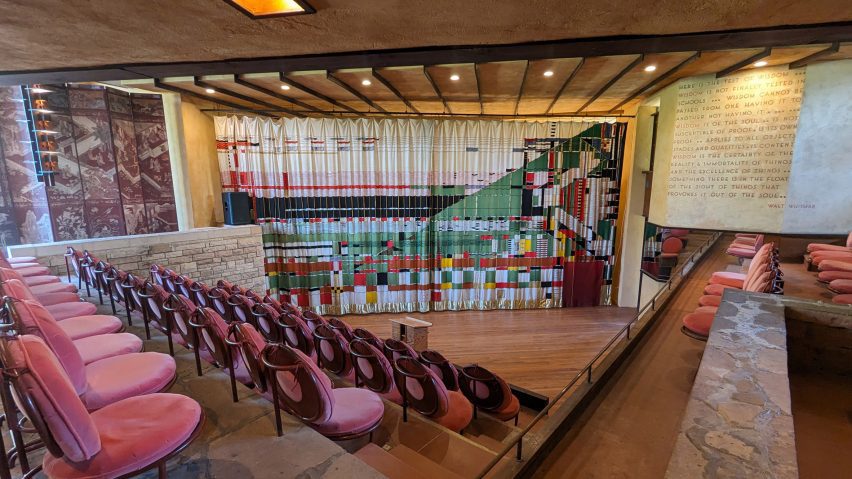
Frank Lloyd Wright Wisconsin theatre reopens after five-year restoration
The Hillside Theatre by Frank Lloyd Wright in Wisconsin has reopened following an extensive five-year restoration that addressed "significant structural and functional challenges".
Located on Taliesin, the Wisconsin estate Frank Lloyd Wright called home for nearly 50 years, the Hillside Theatre served as a multipurpose space since its 1903 inception and as a more formal "playhouse" since 1932.
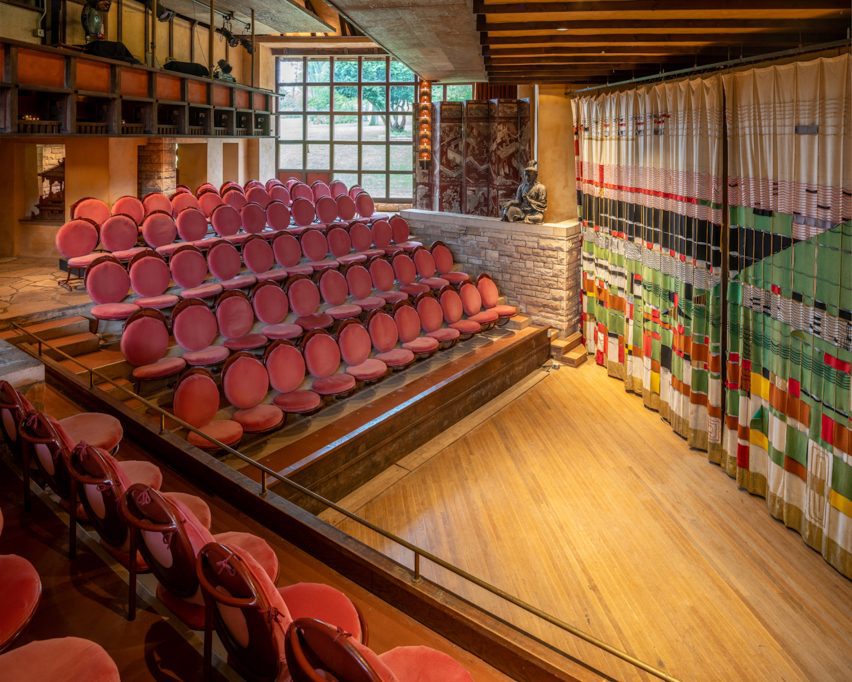
Lying within Taliesin's Hillside Home School building, which lies on the southern tip of the property, the Hillside Theatre was used both by the school and the public.
Its most recent iteration consists of two banks of red theatre seating raised on stone steps angeled towards one another to create a tight corner.
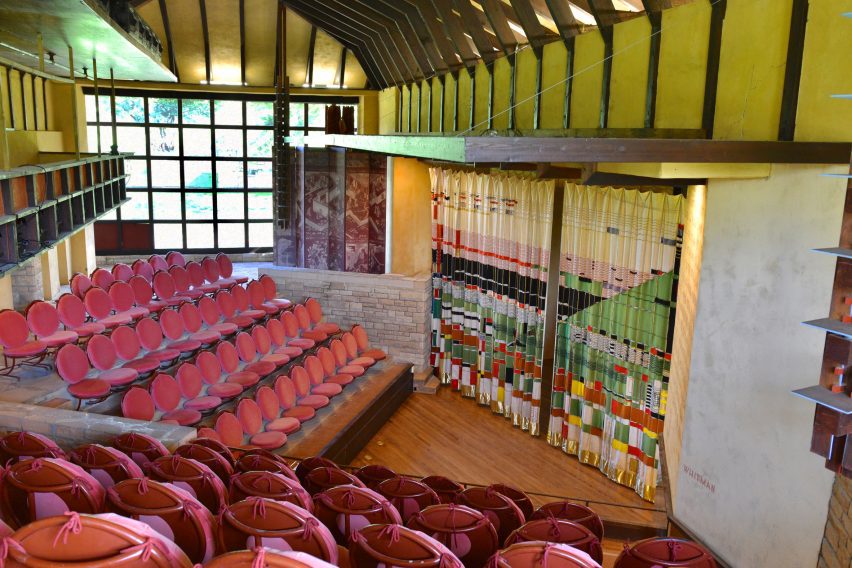
At their centre sits the stage, which is covered in a sprawling, geometric curtain Wright's apprentices handcrafted for the architect in 1957.
Led by the Frank Lloyd Wright Foundation and Taliesin Preservation, a project to restore the theatre began in 2019 after the space faced significant "challenges" to its structure and utilities.
"Key efforts included resolving sub-grade water infiltration that had damaged the stage and surrounding areas; installing an HVAC system to improve climate control and comfort; and enhancing accessibility with new pathways and facilities," said the team.
Other updates included upgrading electrical and plumbing systems, roof repairs, exterior and interior finish repairs and adding additional green rooms to the building's basement.
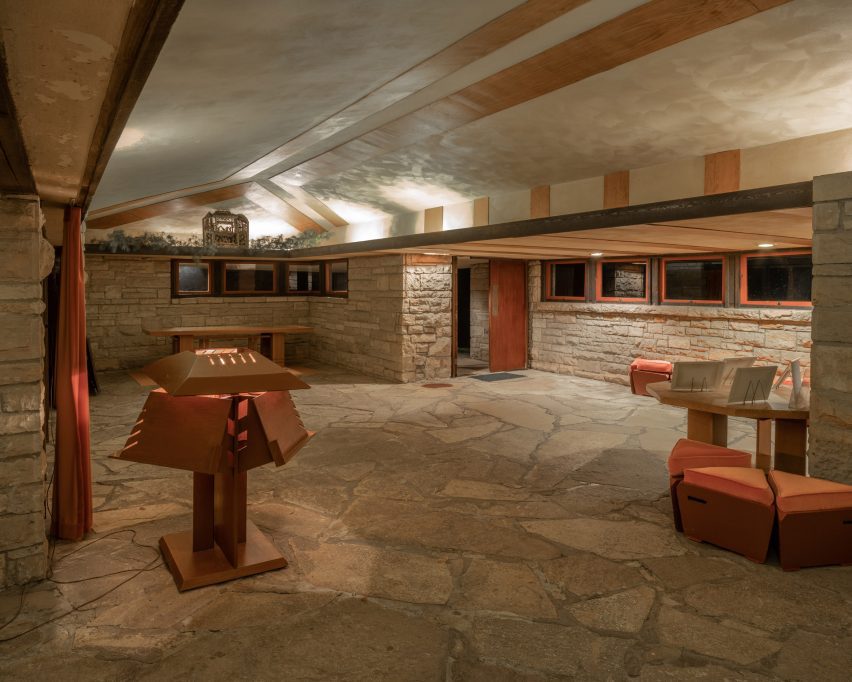
In addition, the team restored the theatre's curtain and "two major Asian bodhisattva sculptures" found throughout the space.
Beyond structural repairs, technological updates include the addition of live-streaming capabilities, according to the team.
"Restoring the Hillside Theater has been a labor of love, preserving its historical essence while integrating modern practices to ensure the space can be enjoyed for years to come," said director of preservation at Taliesin for the Frank Lloyd Wright Foundation Ryan Hewson.
"By addressing structural issues, enhancing accessibility and updating the theatre for present-day performances, Taliesin can continue to serve as a vibrant cultural site for future generations."
The project received funding from National Park Service Save America's Treasures program; the National Endowment for the Arts; the National Trust for Historic Preservation; the E. Rhodes and Leona B. Carpenter Foundation, as well as private donors.
At 800 acres, the Taliesin estate in southwestern Wisconsin includes a number of buildings, including Wright's 37,000-square-foot home and studio, the Midway Barn, the Romeo and Juliet Windmill and the Hillside Home School.
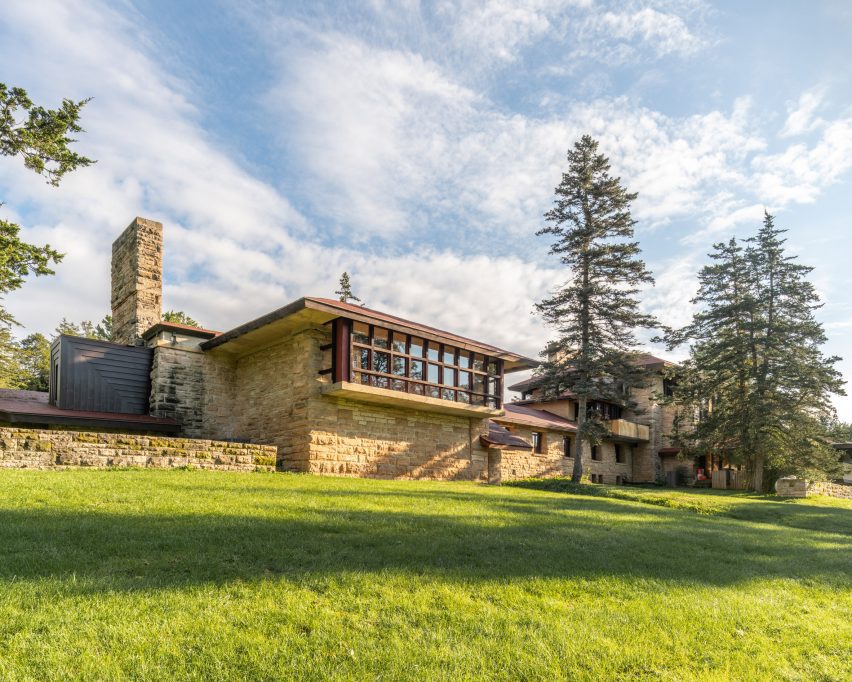
During Wright's life, the property served as a home and studio for the architect, while various buildings were dedicated to other programming including housing for family members, architectural educational and public events.
The Frank Lloyd Wright Foundation stewarded the property until 1992, when the non-profit organization Taliesin Preservation was formed to oversee its care and preservation.
A chapel by Wright's son, Lloyd Wright, is also undergoing preservation and restoration of its own after a landslide caused significant damage, while recently a series of renders revealed several of Wright's unbuilt designs.
The photography is courtesy of Taliesin Preservation